 MOUNTAIN VIEW, Calif., July 25 /PRNewswire-USNewswire/ — The Spaceward Foundation announced today the venue and timing for its annual Space Elevator games.
MOUNTAIN VIEW, Calif., July 25 /PRNewswire-USNewswire/ — The Spaceward Foundation announced today the venue and timing for its annual Space Elevator games.
The event will be held at the Davis County Event Center just outside of Salt Lake City, Utah. The qualifying rounds will start on October 15, and the event will be open to the public between October 19 and October 21.
The Space Elevator competitions, marking their third year running, will feature more than 20 teams from around the country and the world, vying for $1,000,000 in cash prizes provided by NASA’s Centennial Challenges program.
“The Utah Governor’s Office of Economic Development is thrilled to have the Spaceward Games in Utah this year,” said Gary Harter, Managing Director of Business Creation there. Barbara Riddle, director of the Davis area conventions shared his enthusiasm.
This year will feature a new technology competition — “Light Racers” — that allows kids and young adults to take part in a realistic lunar exploration scenario and win cash prizes for their performance. The competition is open to school, family, and grown-up teams. The Light Racers also serve as a science education platform for teaching basic science and math topics.
 Meekk Shelef, president of the Spaceward Foundation: “We are thrilled to have added an educational component where kids can take part in the competition. Reaching out to the scientists and engineers of the future is the most important thing we can do.”
Meekk Shelef, president of the Spaceward Foundation: “We are thrilled to have added an educational component where kids can take part in the competition. Reaching out to the scientists and engineers of the future is the most important thing we can do.”
The Space Elevator games concentrate on two far-reaching technology concepts that will enable NASA to enhance its space program — power beaming for wireless power transfer, and Nano-materials such as Carbon Nanotubes for strong structures.
Ken Davidian, program manager for Centennial Challenges: “I am excited and impressed with the evolution and level of technical maturity demonstrated by the teams in both the Tether and Beam Power Challenges. Over the past 24 months, individual teams started from scratch, have grown continually, have coalesced into communities, and are on the verge of accomplishing substantial achievements worthy of a Centennial Challenges prize.”
Dr. Bradley C Edwards, the leading Space Elevator researcher and science advisor to the games: “The Space Elevator games, with their emphasis on strong tethers and power beaming, represent the road to building the Space Elevator. We hope their cumulative effect on the engineering community will enable further effort in this direction.”
“From what we have seen of the teams so far, we are looking forward to an exciting race to the finish this year,” said Ben Shelef, CEO of the Spaceward Foundation. “Third year’s a charm — we expect to be able to award the prize purse this year.”
The Space Elevator is a revolutionary Earth-to-Space transportation system proposed in 1960 by Yuri Artsutanov and enhanced in 2000 by Dr. Bradley Edwards, then at Los Alamos National Labs. The system is comprised of a stationary cable rotating in unison with the Earth, with one end anchored to the surface of the planet and the other end in space. Electric cars then travel up and down the cable, carrying cargo and people.
For more information on the competitions, visit: http://www.spaceward.org/, email ted [AT] spaceward.org, or call (630) 240-4797.
Press resources are located at http://www.spaceward.org/press/PR-2007-001.html.
The Spaceward Foundation is a public-funds non-profit organization dedicated to furthering space science and technology in the public mindshare and in educational curriculums. We believe that expanding mankind’s habitat is essential to its survival, and that the most effective way to induce long- term change is through education. Spaceward Foundation
CONTACT: Ted Semon of Spaceward Foundation, +1-630-240-4797, ted [AT] spaceward.org
Web site: http://www.spaceward.org/
 One of the entrants in last year’s Space Elevator Games was LiteWon, a team made up of High School students from Westmont High School located in Campbell, CA. Their climber, certainly the least complicated one there, came up with the second best time to the top (a little over two minutes), losing out only to USST. This year, they are returning for another crack at the prize.
One of the entrants in last year’s Space Elevator Games was LiteWon, a team made up of High School students from Westmont High School located in Campbell, CA. Their climber, certainly the least complicated one there, came up with the second best time to the top (a little over two minutes), losing out only to USST. This year, they are returning for another crack at the prize.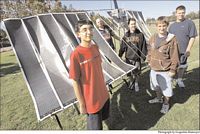 A story ran in the November 1st, 2006 issue of the Campbell Reporter, one I hadn’t seen until Ben Shelef emailed it to me a few days ago. It really is well done and the photographs are wonderful. The author, Alicia Upano, did a marvelous job. My favorite fact from the story was that their climber was powered by a motor from a model airplane.
A story ran in the November 1st, 2006 issue of the Campbell Reporter, one I hadn’t seen until Ben Shelef emailed it to me a few days ago. It really is well done and the photographs are wonderful. The author, Alicia Upano, did a marvelous job. My favorite fact from the story was that their climber was powered by a motor from a model airplane.

 49 years ago today, President Dwight David Eisenhower signed The National Aeronautics and Space Act (Pub.L. 85-568) to create The National Aeronautics and Space Agency, more commonly known as
49 years ago today, President Dwight David Eisenhower signed The National Aeronautics and Space Act (Pub.L. 85-568) to create The National Aeronautics and Space Agency, more commonly known as  Though this agency is often criticized, it’s monumental achievements cannot be overlooked. In addition to winning the race to the moon via its Mercury and Apollo programs, NASA has sent probes all over the solar system and into true outer space. Today, NASA’s Rovers wander the surface of Mars, looking for the building blocks of life. NASA built and launched Skylab and is now working on the International Space Station. It has launched numerous satellites that have performed
Though this agency is often criticized, it’s monumental achievements cannot be overlooked. In addition to winning the race to the moon via its Mercury and Apollo programs, NASA has sent probes all over the solar system and into true outer space. Today, NASA’s Rovers wander the surface of Mars, looking for the building blocks of life. NASA built and launched Skylab and is now working on the International Space Station. It has launched numerous satellites that have performed  spectacularly, perhaps best symbolized by the Hubble Telescope. It has built the Shuttle, the world’s only, true, spaceship; capable of launching into space (with a 20 ton payload) and returning. And for we Space Elevator afficiandos, let’s not forget that NASA provided the money for Dr. Edwards research which led to
spectacularly, perhaps best symbolized by the Hubble Telescope. It has built the Shuttle, the world’s only, true, spaceship; capable of launching into space (with a 20 ton payload) and returning. And for we Space Elevator afficiandos, let’s not forget that NASA provided the money for Dr. Edwards research which led to  the Space Elevator concept we are all working for, not to mention the prize money for the
the Space Elevator concept we are all working for, not to mention the prize money for the  There is little doubt that NASA is going through perhaps their most difficult time now. From constantly changing priorities, to personnel issues that have become soap-opera fodder, to trying to deal with the nascent commercialization of space, it sometimes seems now like they are in a lose-lose situation. But I think we have to step back and take a look at the larger picture and just marvel at what they have actually accomplished and what they continue to do.
There is little doubt that NASA is going through perhaps their most difficult time now. From constantly changing priorities, to personnel issues that have become soap-opera fodder, to trying to deal with the nascent commercialization of space, it sometimes seems now like they are in a lose-lose situation. But I think we have to step back and take a look at the larger picture and just marvel at what they have actually accomplished and what they continue to do.
 There have been a couple of posts recently (
There have been a couple of posts recently (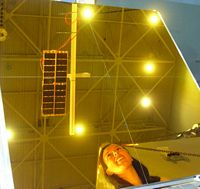
 MOUNTAIN VIEW, Calif., July 25 /PRNewswire-USNewswire/ — The
MOUNTAIN VIEW, Calif., July 25 /PRNewswire-USNewswire/ — The  Meekk Shelef, president of the Spaceward Foundation: “We are thrilled to have added an educational component where kids can take part in the competition. Reaching out to the scientists and engineers of the future is the most important thing we can do.”
Meekk Shelef, president of the Spaceward Foundation: “We are thrilled to have added an educational component where kids can take part in the competition. Reaching out to the scientists and engineers of the future is the most important thing we can do.” LiftPort/Tethered Towers may have one or more potential customers for this product and that may be enough for them to stay solvent and continue on their quest to build a Space Elevator. Let’s hope so…
LiftPort/Tethered Towers may have one or more potential customers for this product and that may be enough for them to stay solvent and continue on their quest to build a Space Elevator. Let’s hope so… Today I heard back from Mr. Shiuchi Ohno, one of the founders of the newly formed Japan Space Elevator Association (JSEA). I had emailed them a few questions – here are his responses;
Today I heard back from Mr. Shiuchi Ohno, one of the founders of the newly formed Japan Space Elevator Association (JSEA). I had emailed them a few questions – here are his responses; The first half of this 25 minute long YouTube video (originally from
The first half of this 25 minute long YouTube video (originally from  The
The 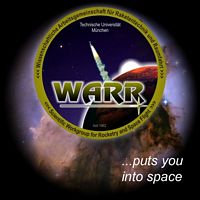
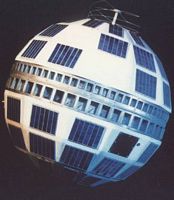
 On the Team Snowstar
On the Team Snowstar 
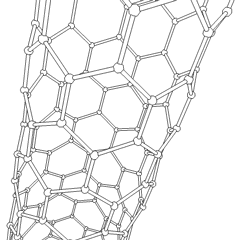 In a related article, “
In a related article, “ As ScienCentralNews
As ScienCentralNews  One of the entrants in the 2006
One of the entrants in the 2006  As reported today on
As reported today on 
